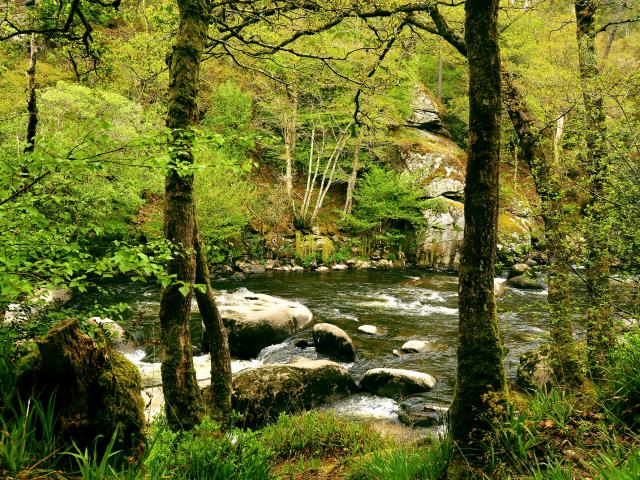
©Amandine Picard
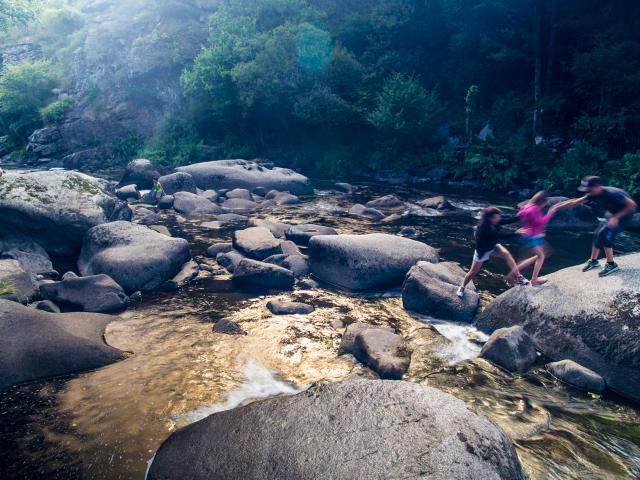
©Franck Betermin
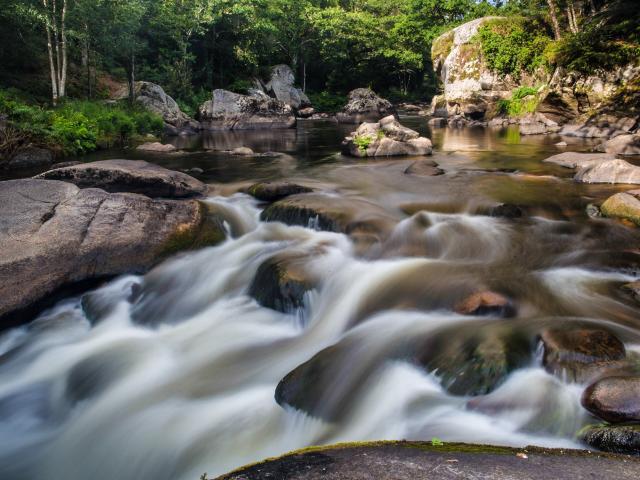
©Franck Betermin

©Amandine Picard

©Franck Betermin
The site is not nearly as hellish as its devilish name might suggest… In fact, in the dappled sunlight filtering through the leaves, it becomes a paradise of chlorophyll and polished granite sculptures, shimmering amidst the rushing water and the cheerful cheeping of the birds.
Click. Inspire. Go…
Receive the Brittany newsletter!
Between Le Faouët and Quimperlé, set within rolling, wooded countryside, the Devil’s Rocks as they are known form a stunning landscape, not far from Locunolé. From a maze of footpaths, you look down on an intriguing arrangement of granite boulders where the River Ellé cascades through. Time and the river have worn away their edges. However, when the water’s flow picks up, the rapids can become diabolical again… And an adventure playground for experienced whitewater canoeists. Competitions are even organised here, incidentally.
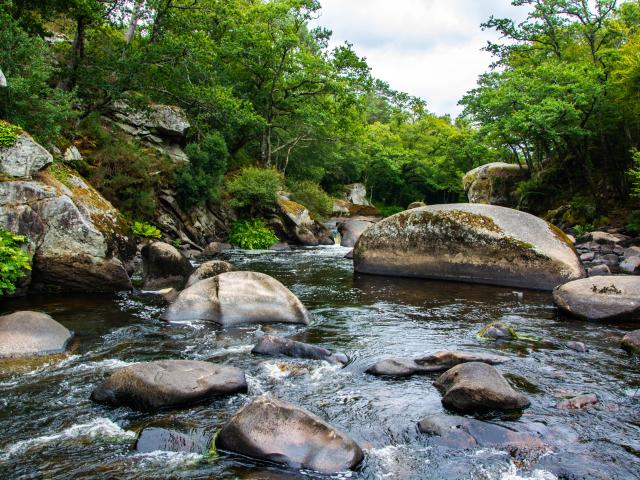
Saint Winwaloe (Guénolé in French) was so charmed by this unique site, hollowed out by the River Ellé, that he decided to make his home among this chaotic mass of evocatively-shaped boulders, to found his hermitage. Some rock formations could be an original-looking table, bowl or pulpit. Comfort and water aplenty! But there was one problem: the Devil had already claimed the site as his own. What followed was an epic battle which saw Satan retreat to the other side of the Ellé. After this battle, Saint Winwaloe needed a bridge to preach the good news. To build it, he made a deal with the Devil. The first living soul to cross the bridge would be sent to the underworld with the Devil. But Saint Winwaloe sent a squirrel across the bridge… In his anger, the Devil plunged into the Ellé, leaving an unfathomable chasm behind. As you hop across the boulders covered with moss, following the current down the track that winds along the riverbank, perhaps you’ll be lucky enough to stumble upon this abyss where, so it is believed, there is hidden treasure.
The name of the River Ellé is thought to come from the Breton word for hell, Ellez. Its source rushes forth through the Armorican plateau at Le Faouët, below Sainte-Barbe Chapel.
The Ellé’s waters flow more calmly as they enter the town of Quimperlé, joining the Isole to form the Laïta. The river continues beneath the Pont Fleuri behind the circular Romanesque church of Sainte-Croix. A nearby street, Rue Dom-Morice, whisks you back to the 16th century, with its half-timbered houses and uneven cobbled streets.
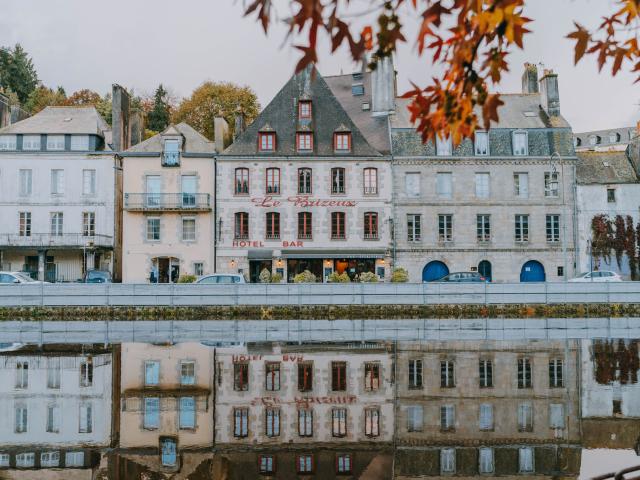 Quimperle Noec 2031 12
Quimperle Noec 2031 12